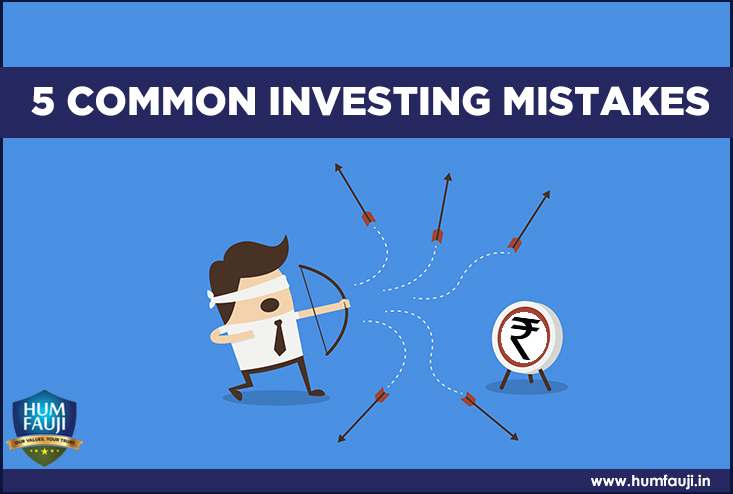Investment is one of the most reliable ways to build wealth over the long term. Yet, many individuals—particularly beginners—make avoidable mistakes that can seriously impact their financial outcomes. By identifying these errors early, investors can better manage risk, increase returns, and reach their financial goals with greater confidence.

💼 1. Lack of Diversification
The Mistake:
Investors sometimes allocate all their funds into a single investment, such as one stock, asset class, or industry sector. This overexposes them to market fluctuations and increases the likelihood of loss if that specific asset performs poorly.
Why It Happens:
This often stems from overconfidence or following short-term trends without considering the bigger picture.
How to Avoid It:
Diversify across multiple asset types (stocks, bonds, real estate, commodities), industries, and geographies. This reduces the risk of total portfolio collapse during sector-specific downturns (Aviva, 2023).
📉 2. Trying to Time the Market
The Mistake:
Market timing involves trying to buy investments at market lows and sell at highs. Even experienced professionals struggle with this, and failure can lead to significant losses.
Why It’s Risky:
Missing just a few of the best-performing market days can drastically reduce your returns. For example, J.P. Morgan Asset Management (2022) reported that investors who missed the 10 best days in the S&P 500 over 20 years saw significantly lower returns than those who stayed invested.
How to Avoid It:
Use a strategy like dollar-cost averaging to invest consistently over time, regardless of market conditions. This lowers the average cost per share and removes emotion from investing (Forbes Advisor, 2023).
🧾 3. Failing to Review and Rebalance Your Portfolio
The Mistake:
Investors sometimes “set and forget” their portfolios, neglecting to rebalance over time. This results in misalignment with financial goals or increased risk levels.
Why It Matters:
If one asset class outperforms others, it can begin to dominate the portfolio, increasing risk unintentionally.
How to Avoid It:
Schedule regular reviews—at least annually—to assess performance and rebalance your investments back to your original asset allocation. This ensures alignment with your investment objectives (Aviva, 2023).
💰 4. Overlooking Fees and Hidden Costs
The Mistake:
Many investors ignore expense ratios, fund management fees, and transaction costs, which compound over time and eat into investment returns.
Why It Hurts:
Even a seemingly small 1% annual fee can reduce your final portfolio value by tens of thousands of dollars over a few decades due to compounding (Forbes Advisor, 2023).
How to Avoid It:
Compare expense ratios before investing and choose low-cost options like index funds or ETFs when possible. Ensure you’re aware of all fees related to financial advisors or robo-advisors.
😱 5. Letting Emotions Drive Investment Decisions
The Mistake:
Panic selling during market dips or overbuying during a market rally are common examples of emotional investing, often driven by fear or greed.
Why It Happens:
Investors tend to make reactive decisions in response to market headlines or short-term performance rather than sticking to a long-term strategy.
How to Avoid It:
Create a clear investment plan and automate contributions to remove emotional decision-making. As Ramit Sethi advises, staying calm and committed to your long-term goals is essential, especially during volatile periods (Business Insider, 2024).
Read More:https://wealthfitlife.com/how-to-build-an-investment-portfolio-from-scratch/
✅ Conclusion
Avoiding these five key mistakes—lack of diversification, market timing, neglecting portfolio reviews, ignoring fees, and emotional investing—can dramatically improve your investment results. By developing a disciplined, informed approach, you can better navigate the markets and build long-term wealth with confidence.
❓ Frequently Asked Questions (FAQs)
- What is a diversified portfolio?
A diversified portfolio spreads your investments across various asset classes (stocks, bonds, real estate, etc.) and industries to minimize risk and smooth out performance. - How much should I invest each month?
It depends on your financial goals, but a common recommendation is to invest at least 15–20% of your income toward retirement or long-term wealth building. - Is now a good time to invest?
Instead of trying to pick “the best time,” consider dollar-cost averaging—investing consistently over time regardless of market conditions. - What are index funds, and are they safe?
Index funds are low-cost investment vehicles that track the performance of a market index like the S&P 500. They’re generally considered safe for long-term investors. - Can I invest without a financial advisor?
Yes. Many platforms offer user-friendly tools and robo-advisors. However, consulting a financial advisor can help if you have complex needs or want personalized guidance. - What should I do if the market crashes?
Stay calm. Market downturns are normal. Avoid panic selling and stick to your long-term strategy. Historically, markets recover over time. - Are investment apps safe?
Reputable investment apps with proper encryption and regulation are safe. Look for apps regulated by financial authorities in your country. - How often should I rebalance my portfolio?
At least once a year, or whenever your asset allocation drifts significantly (e.g., 5–10%) from your target mix. - What’s a reasonable return on investment (ROI)?
Historically, the stock market has returned about 7–10% annually (after inflation). Your ROI may vary depending on asset mix and risk level. - Can I lose all my money in the stock market?
It’s unlikely if you’re diversified. While individual stocks can become worthless, diversified portfolios across asset classes reduce the risk of total loss.
